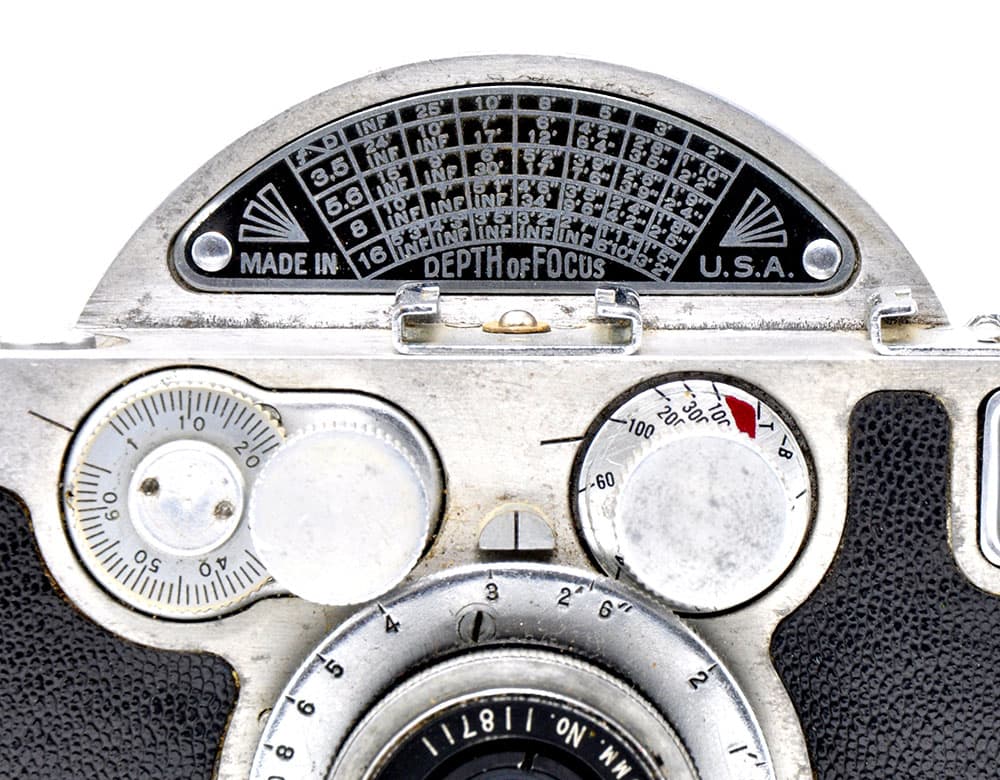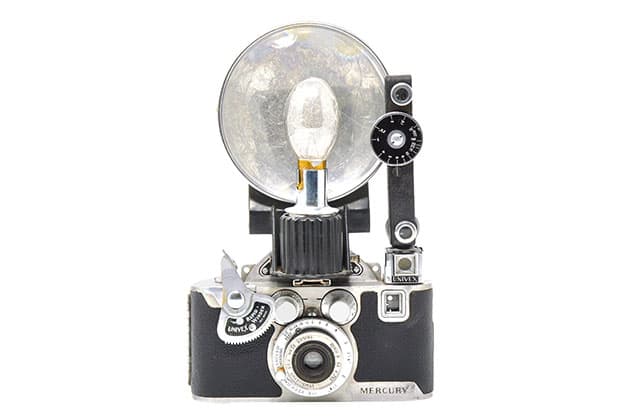Mercury I and II
- Launched 1938 (I) and 1945 (II)
- Price at launch Approximately £8 (Mercury I) and £20 (Mercury II)
- Guide price now Approximately £75 (Mercury I) and £35 (Mercury II)
The American Universal Camera Corporation made two similarly designed Mercury cameras. The first model takes Universal’s own No 200 film; the second model uses standard 35mm film. Both produce 18x24mm half-frame negatives.

The depth of field/focus scale on the Mercury II’s shutter hump. Credit: John Wade
Each camera is dominated by a large semicircular hump protruding from the top plate. This is inscribed with a depth-of-field (which the maker called ‘depth of focus’) scale, but is there to house the rotary shutter which gives speeds of 1/20–1/1000sec. Speeds are set unusually by a knob to the right of the lens.
On both cameras, twin accessory shoes sit on the top plate in front of the hump. One is like an early form of hot shoe, with electrical contacts that match with the Mercury’s own flashgun obviating the need for the flash cable more often used with cameras of this era. The second shoe accepts an extinction meter with its own accessory shoe on top, into which a rangefinder is slotted.

Back of the Mercury II, with its exposure calculator and other picture-taking information guides. Credit: John Wade
The backs of both cameras incorporate complicated exposure calculators with a series of revolving discs on which the photographer dials in factors such as time of year and day, seasons, and weather conditions against subject types like landscapes, street scenes, etc. Suggested shutter speeds read on a scale against apertures are set manually.
Whether you are a collector or a user, there’s a lot of fun to be had from the Mercury cameras.
- What’s good Model II accepts 35mm film; usable range of accessories
- What’s bad Large camera, small negative; film unavailable for Model I








